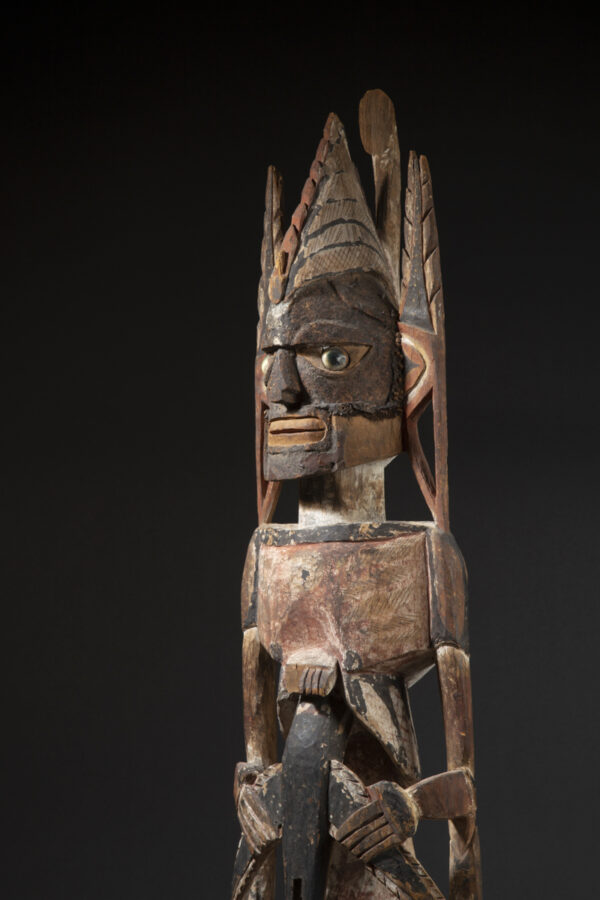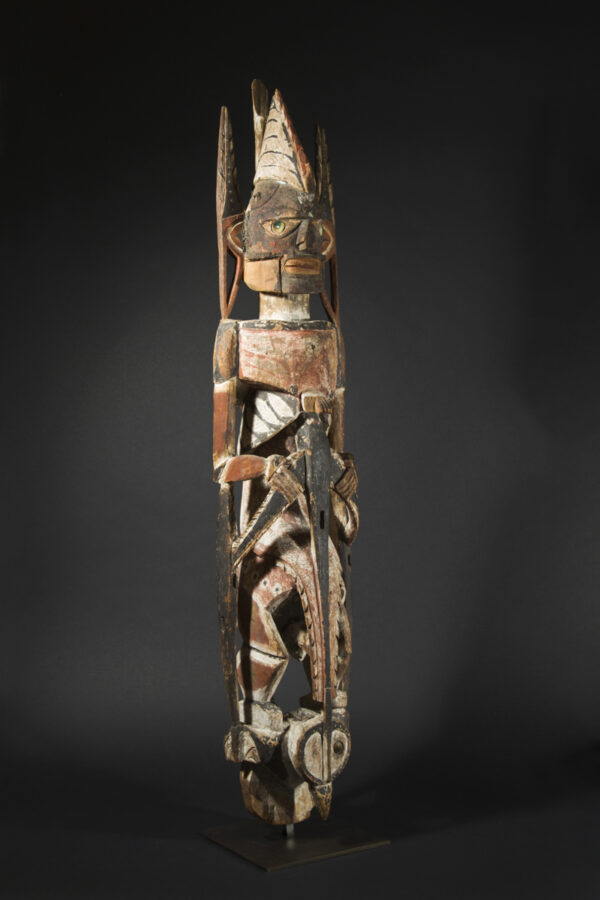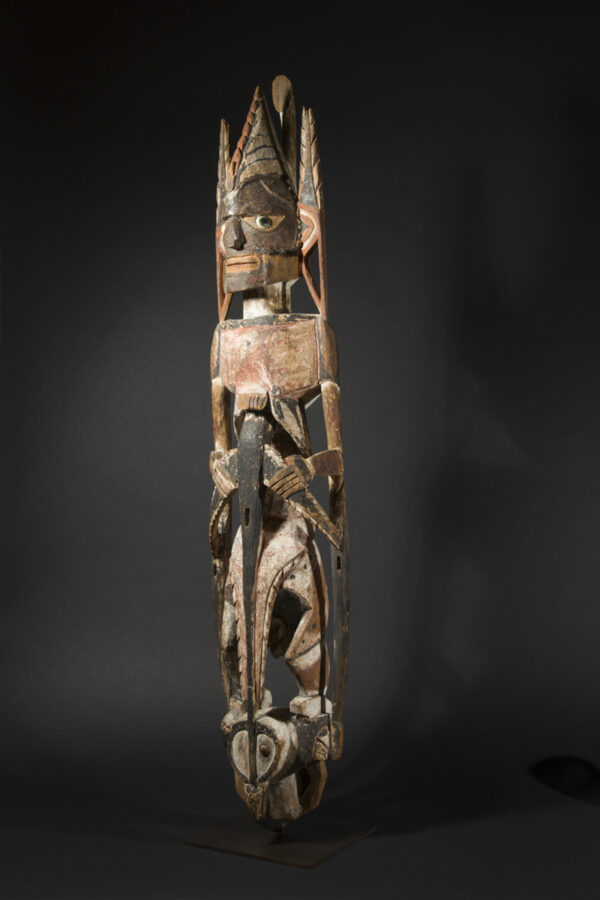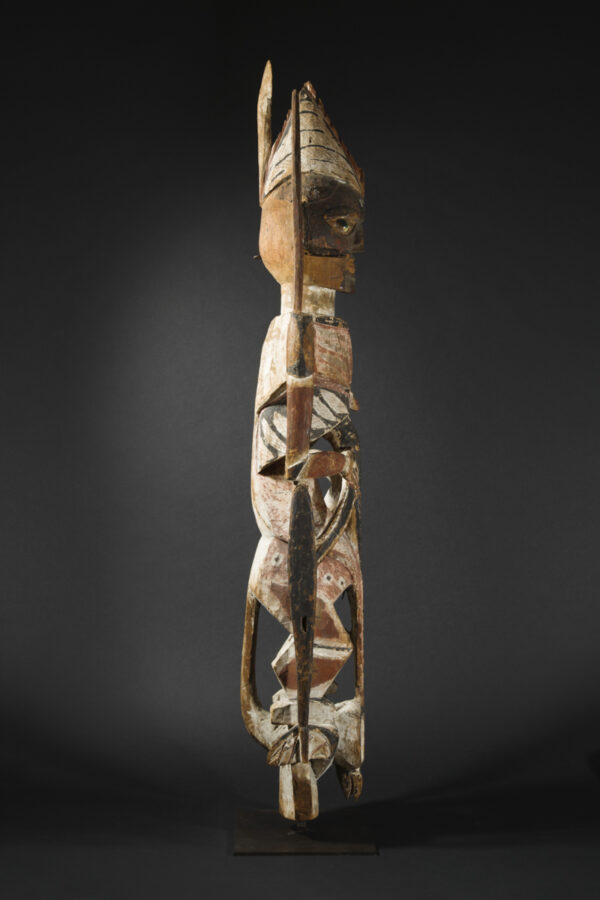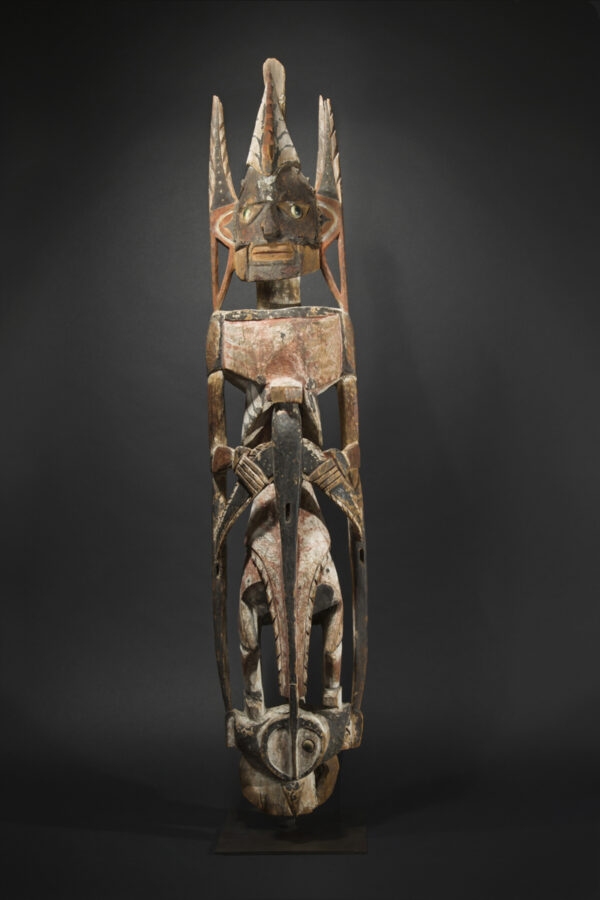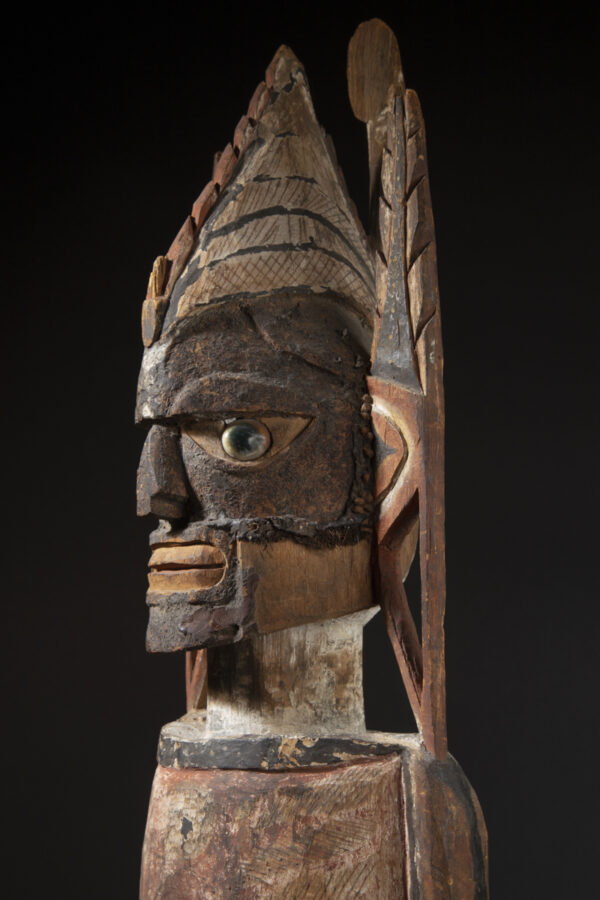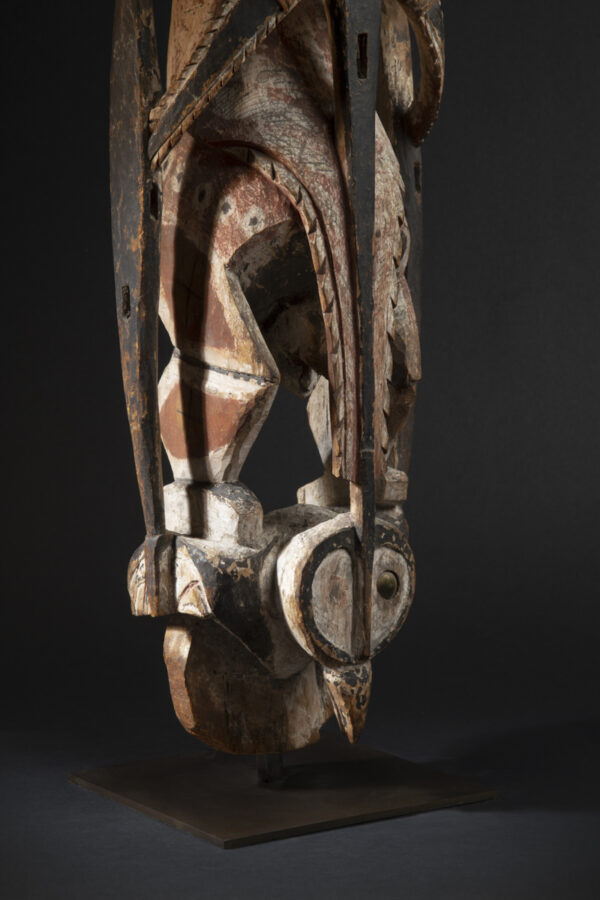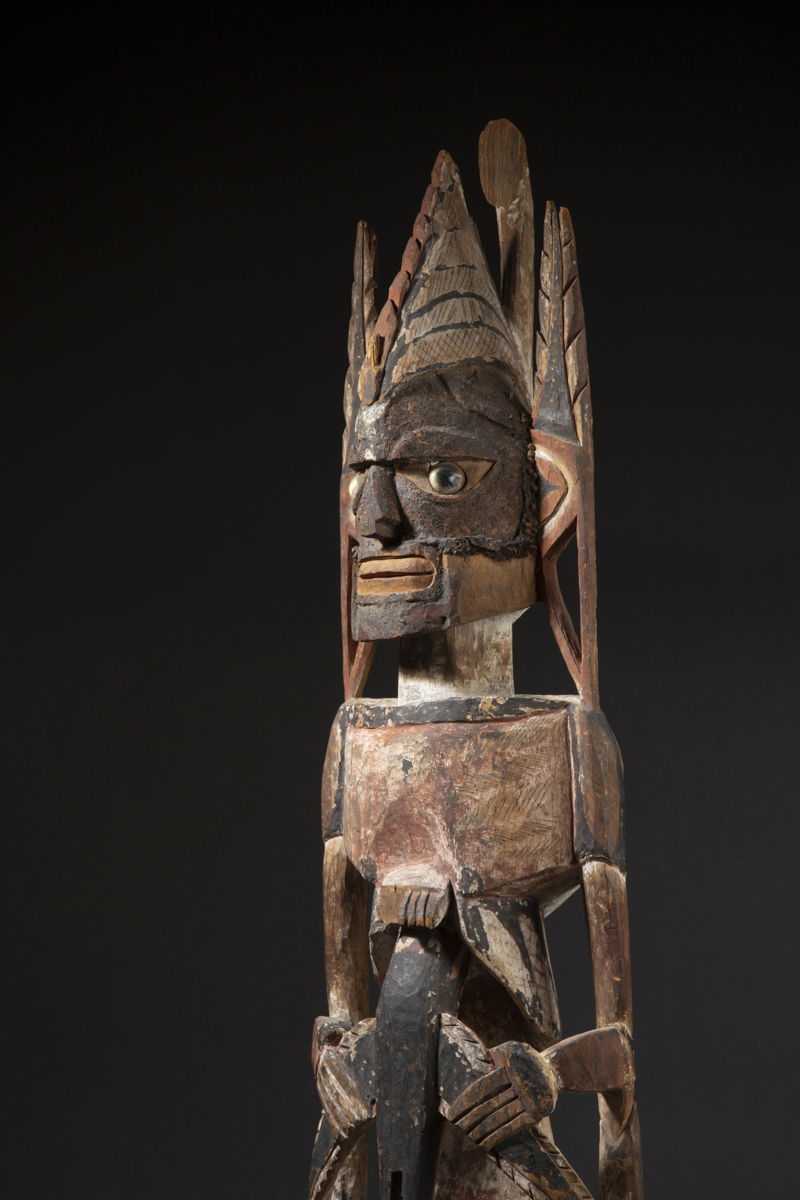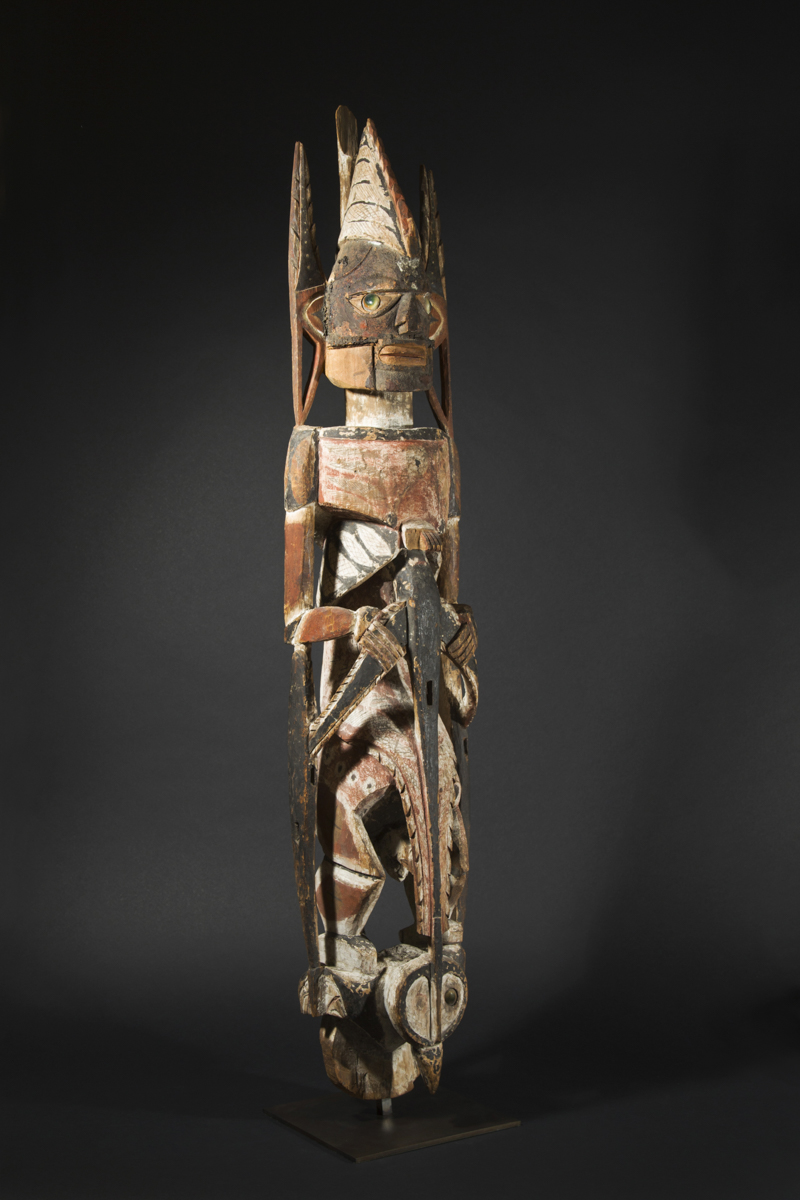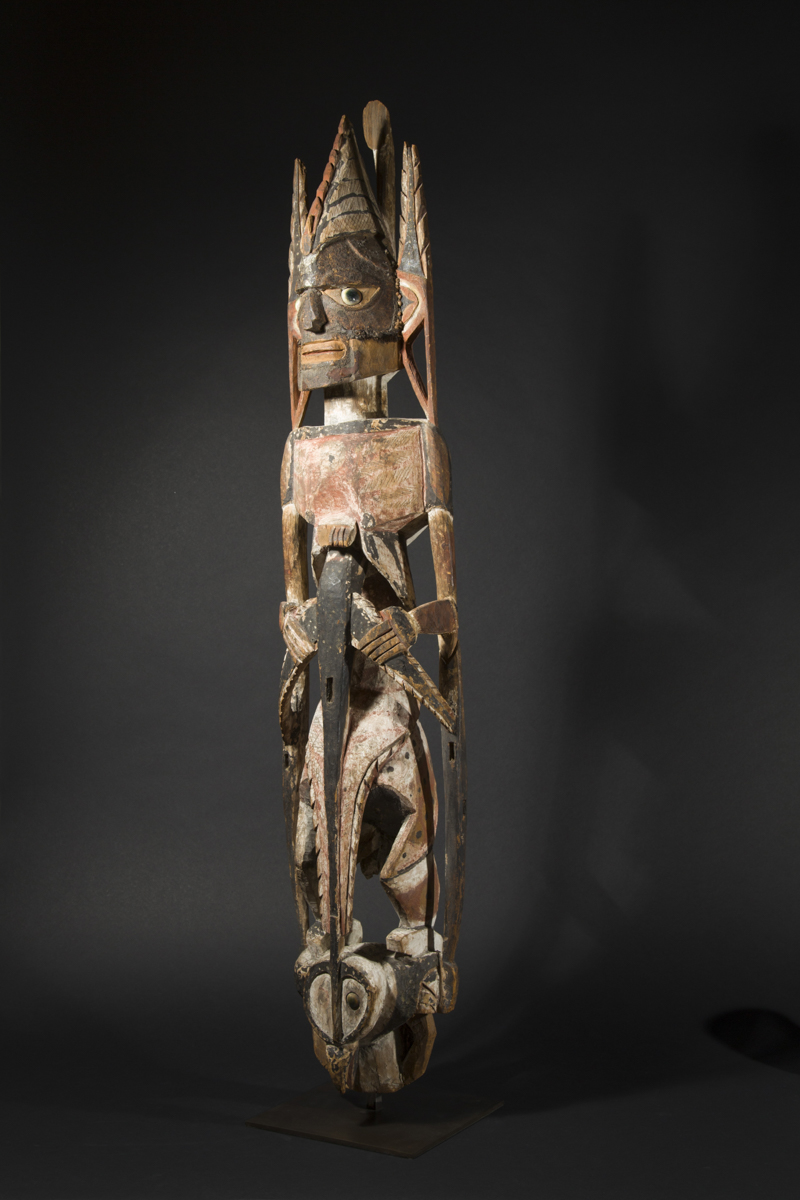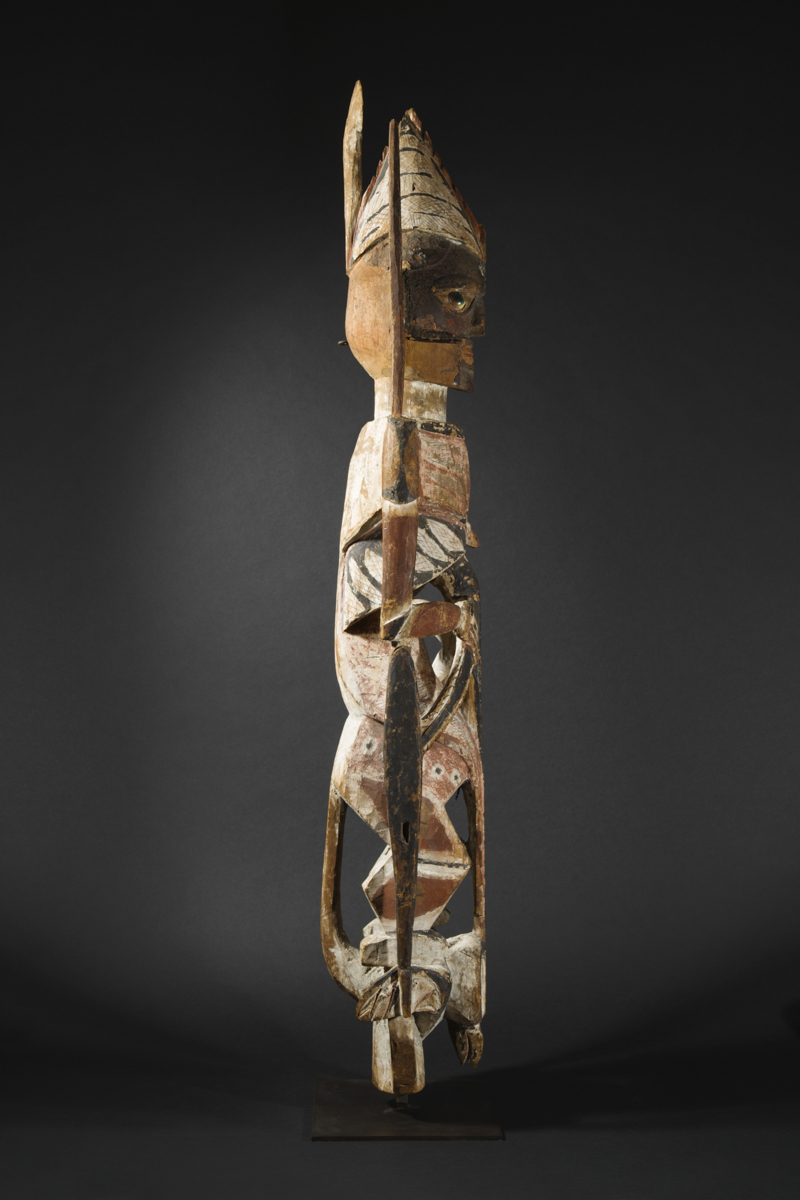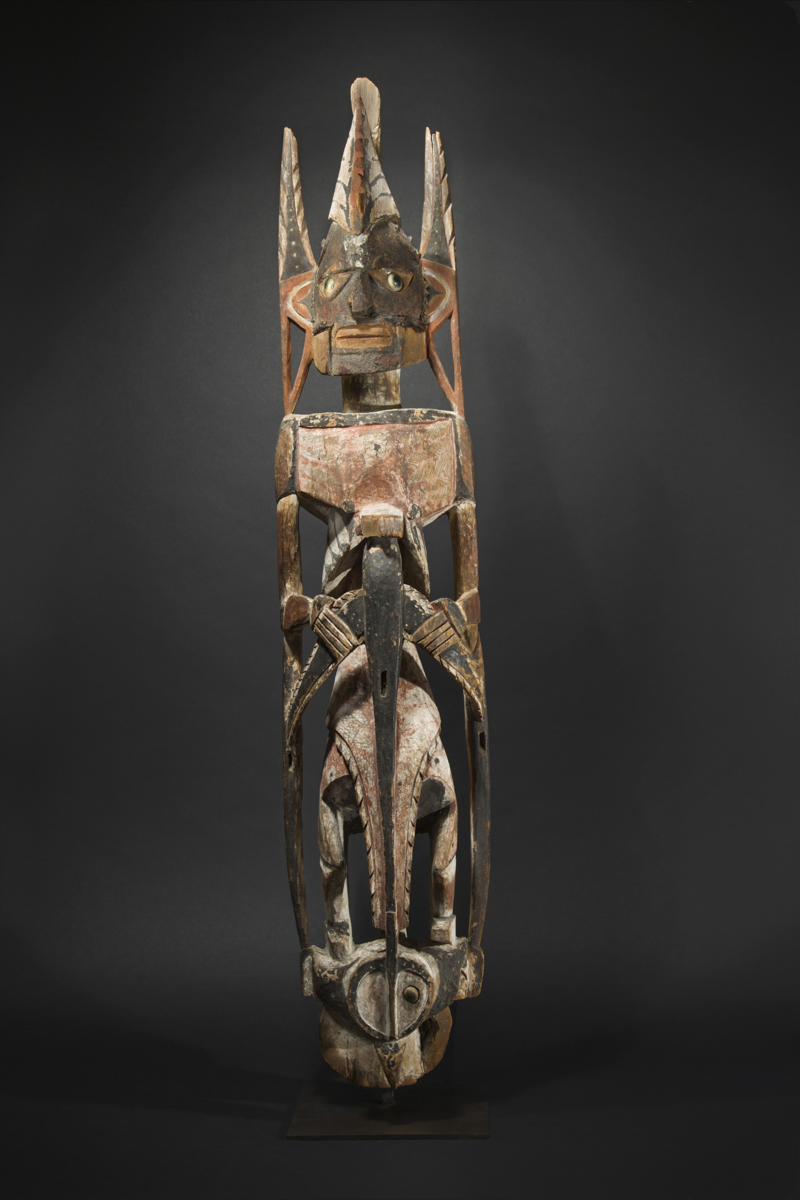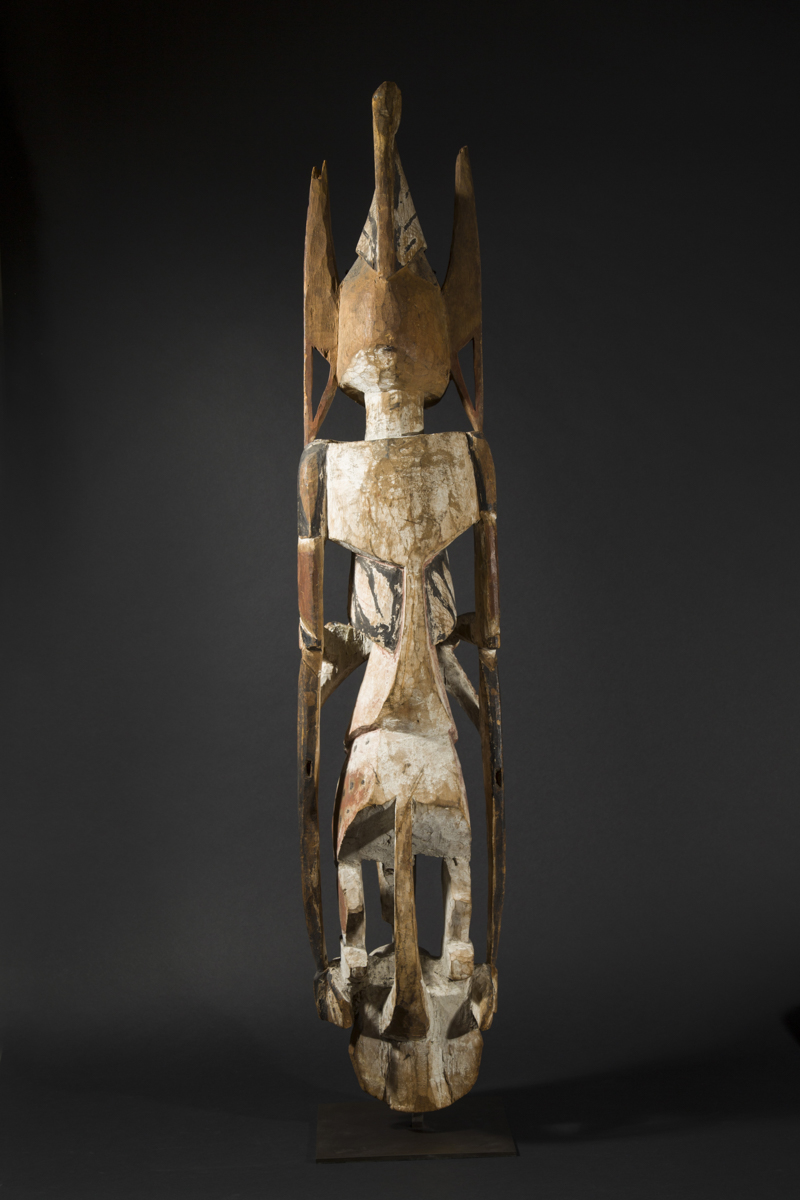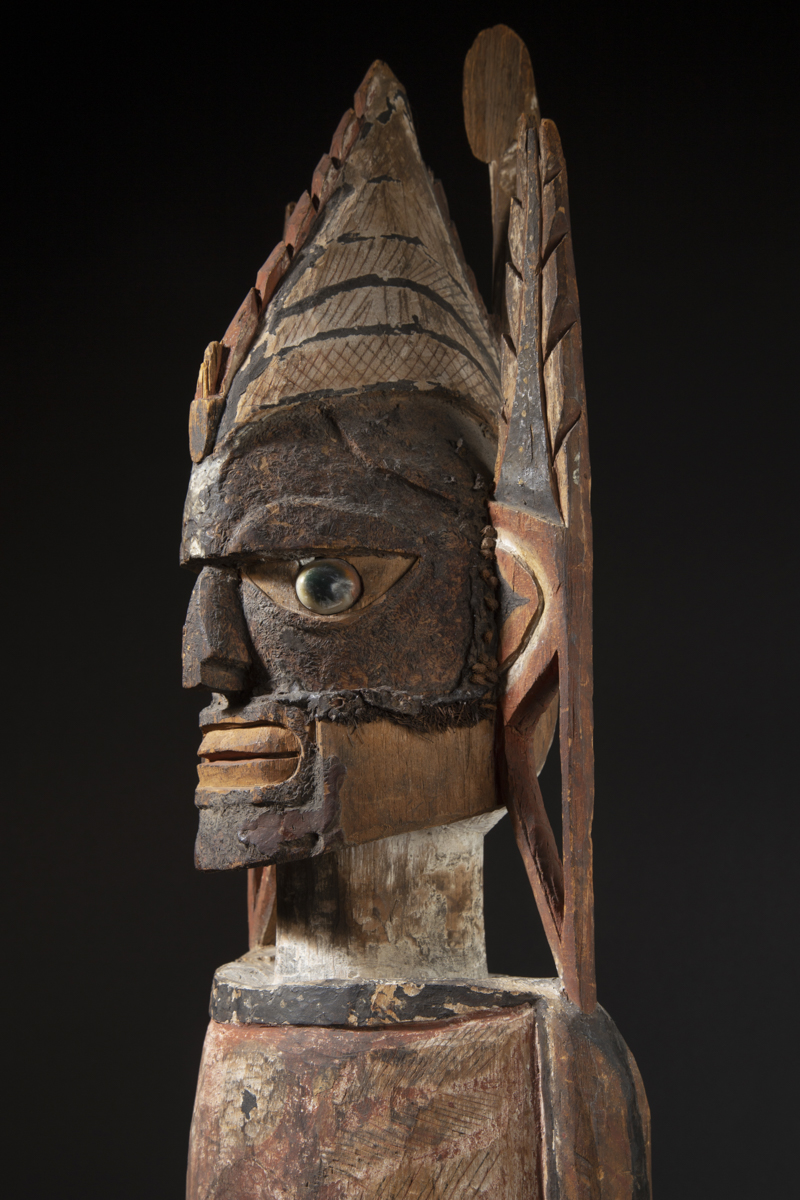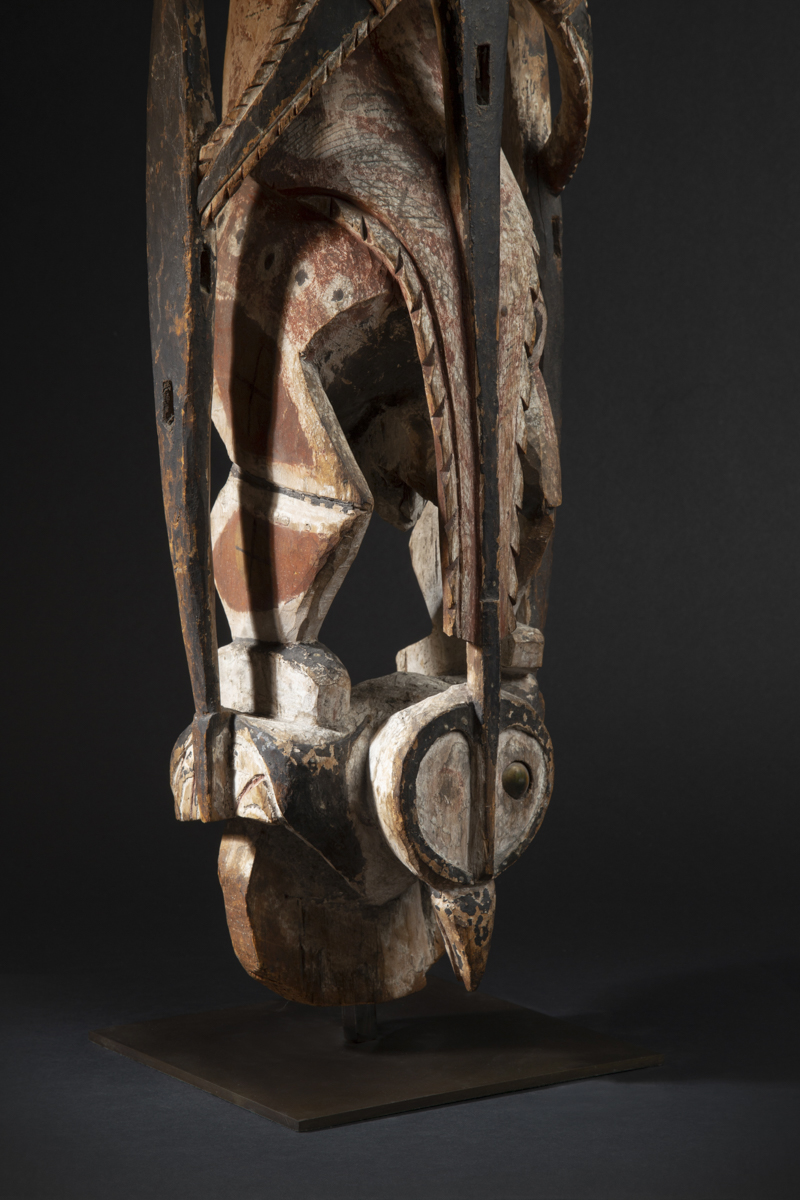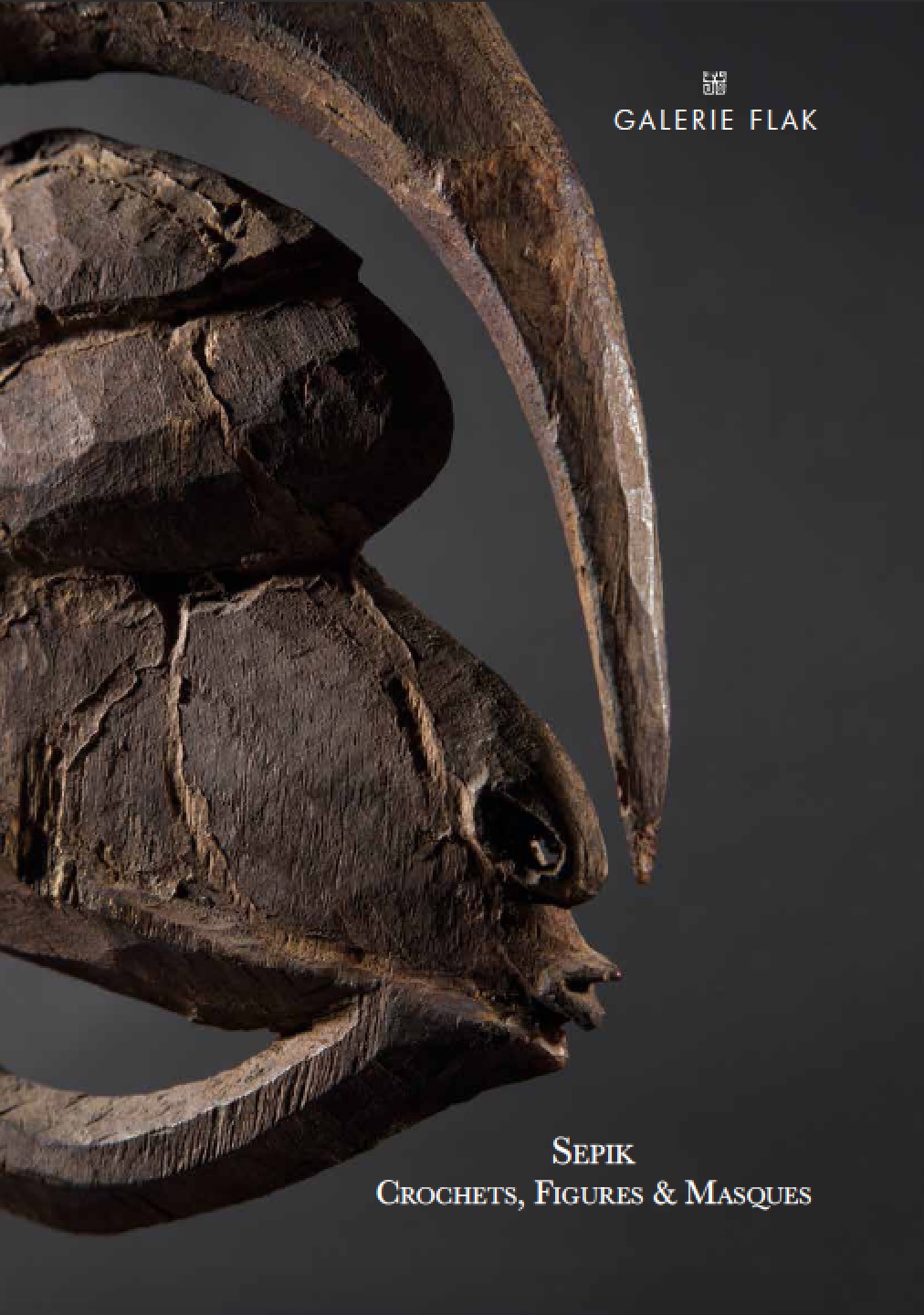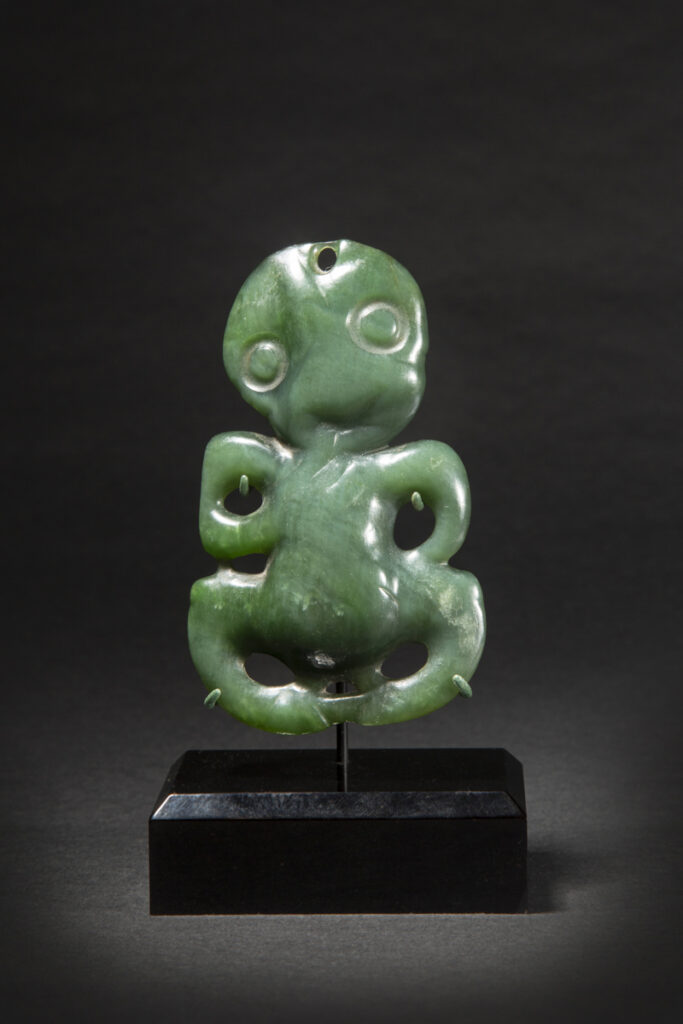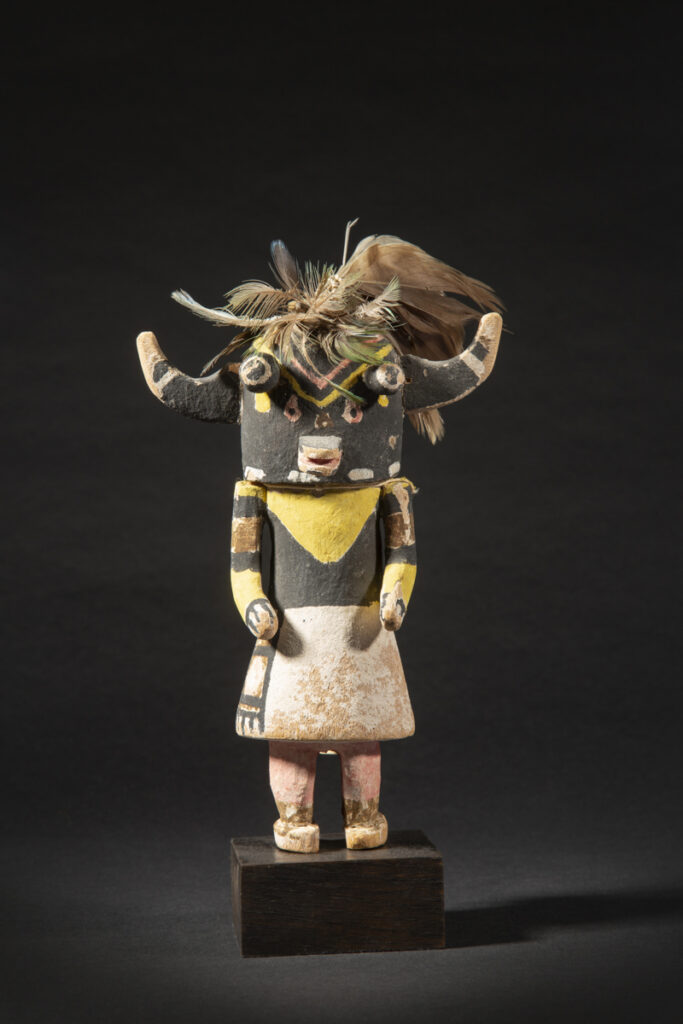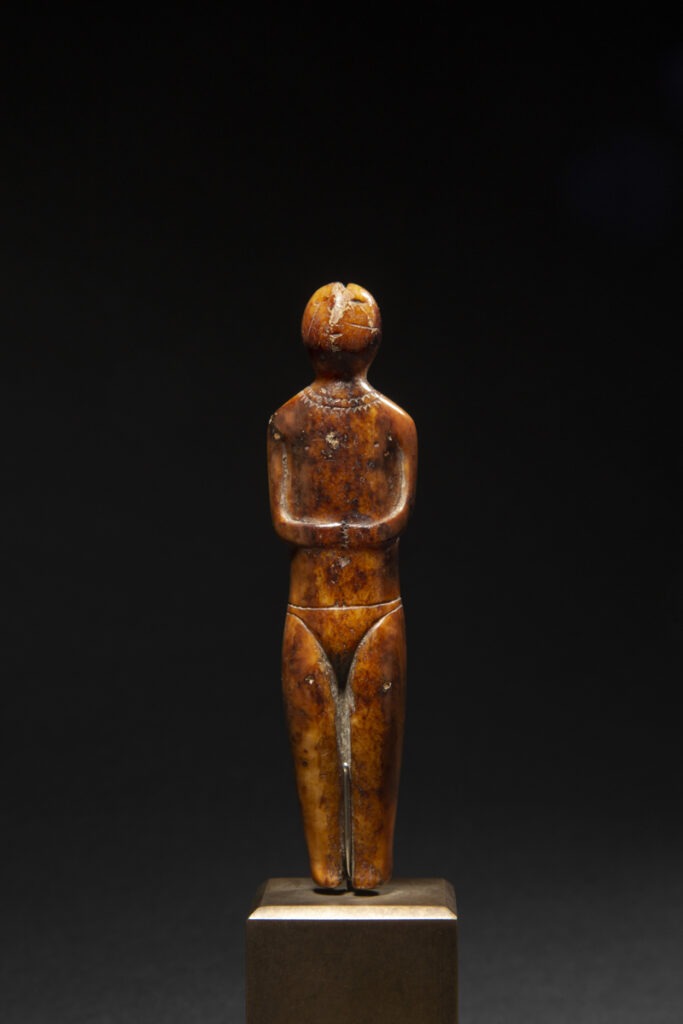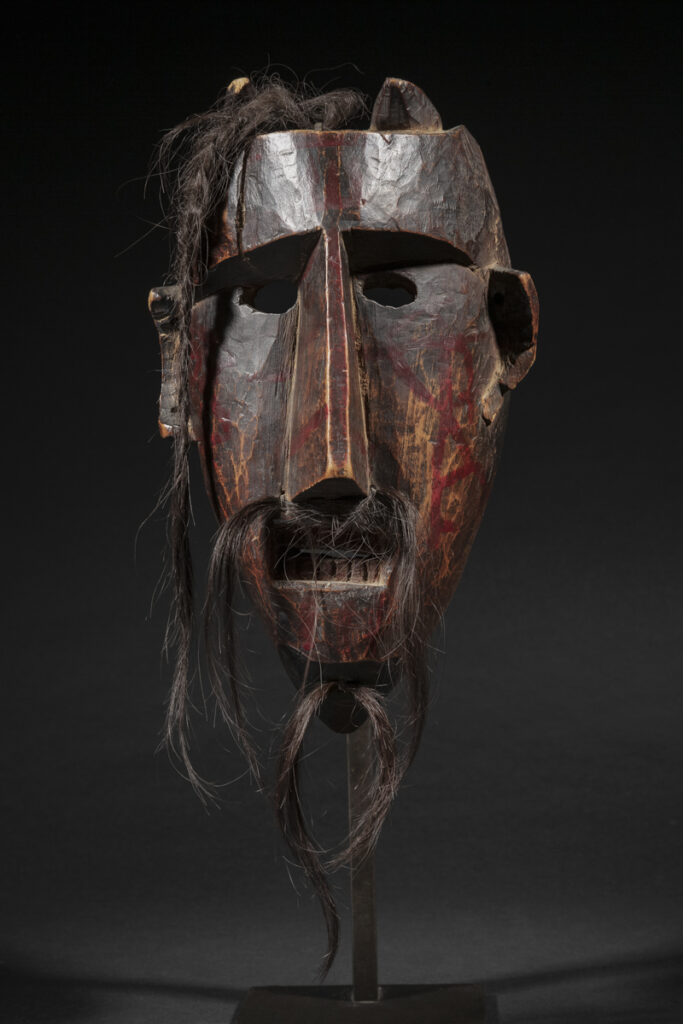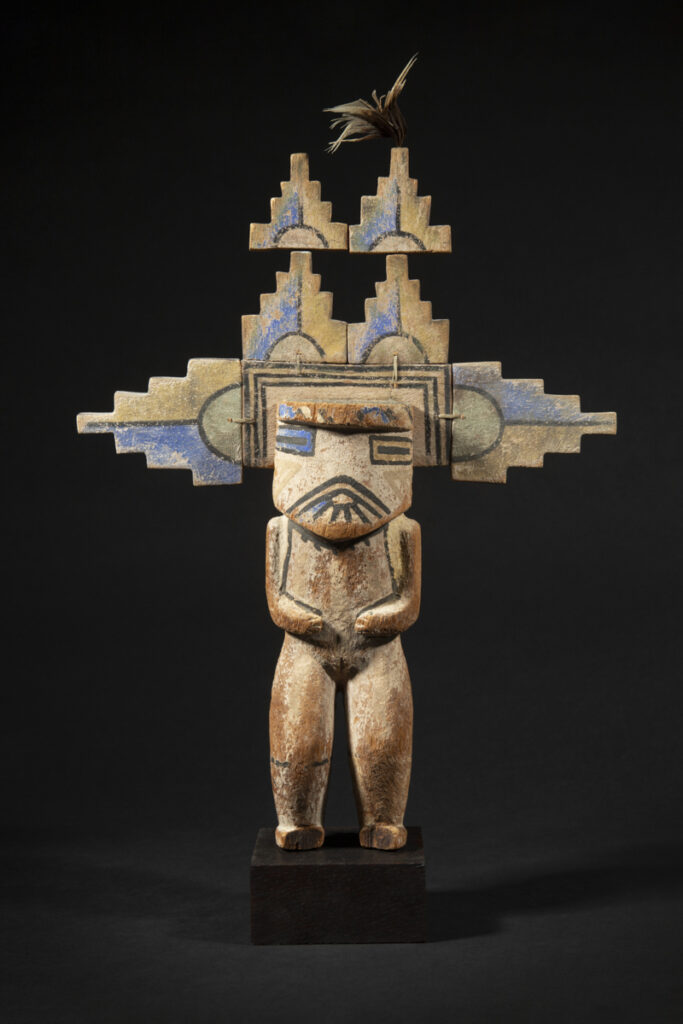oceania | New Ireland
Malagan Figure
New Ireland
Northern New Ireland
Late 19th century
Carved wood
Height: 42 ½ in (108 cm)
Provenance
Ex collection Bernard Brugidou, Paris
Ex collection Jean-Pierre Laprugne, Paris
Laprugne Malagan Figure 108 cm / Galerie Flak
Price on request
This sculpture represents a standing figure and includes various animal representations (notably an owl and flying fish). The figure is wearing a pointed headdress known as a « rain helmet ».
This carving was ritually displayed during malagan ceremonies. These ritual cycles constituted the final stage of mourning for important ancestors. The malagan cycle aimed at restoring social balance and harmony.
Acting not as a portrait of the departed, « but rather as a representation of the vital energy which engendered and animated him » (Arts Rituels d’Océanie, Nouvelle-Irlande, Michael Gunn, 1997, p. 49), the statue illustrates ancestral motifs specific to the individual or the clan. Philippe Peltier notes in New Ireland: Art of the South Pacific (quai Branly museum, 2006, p. 78) that the malagan aims at picking up the ancestor's energy, channeling it and sharing it out among the members of the clan to tighten social bonds within the community.
The sculpture presented here is redolent with power and poetry. It constitutes a superb example of the classic arts of New Ireland.
This carving was ritually displayed during malagan ceremonies. These ritual cycles constituted the final stage of mourning for important ancestors. The malagan cycle aimed at restoring social balance and harmony.
Acting not as a portrait of the departed, « but rather as a representation of the vital energy which engendered and animated him » (Arts Rituels d’Océanie, Nouvelle-Irlande, Michael Gunn, 1997, p. 49), the statue illustrates ancestral motifs specific to the individual or the clan. Philippe Peltier notes in New Ireland: Art of the South Pacific (quai Branly museum, 2006, p. 78) that the malagan aims at picking up the ancestor's energy, channeling it and sharing it out among the members of the clan to tighten social bonds within the community.
The sculpture presented here is redolent with power and poetry. It constitutes a superb example of the classic arts of New Ireland.
Publication
Explore the entire collection
